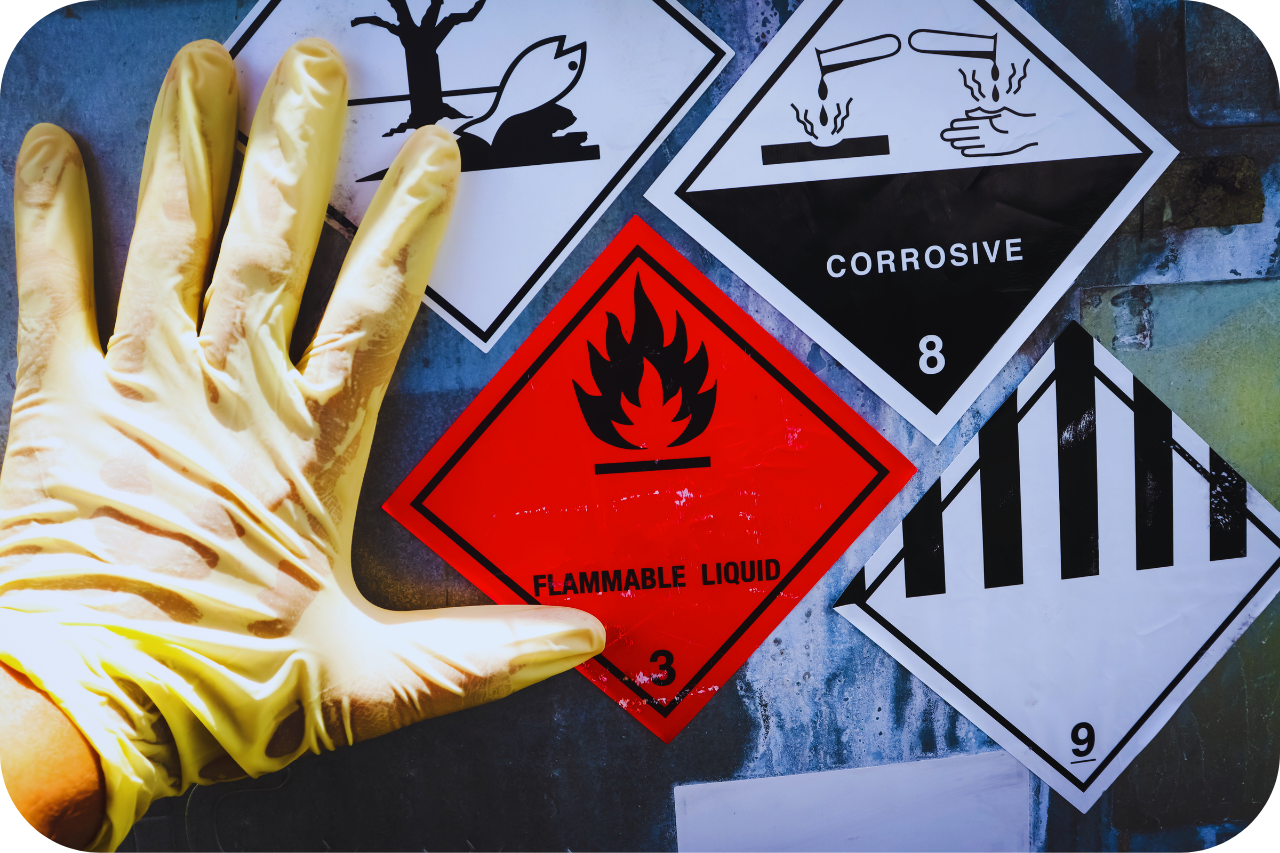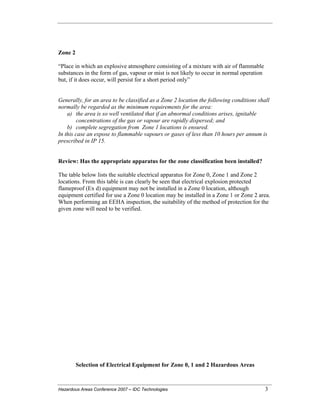A Biased View of Roar Solutions
A Biased View of Roar Solutions
Blog Article
Some Of Roar Solutions
Table of ContentsRoar Solutions - QuestionsThe 3-Minute Rule for Roar SolutionsThings about Roar Solutions
In such an atmosphere a fire or explosion is feasible when 3 basic problems are satisfied. This is typically referred to as the "unsafe location" or "burning" triangle. In order to shield installments from a possible explosion a technique of evaluating and categorizing a potentially harmful location is required. The purpose of this is to ensure the correct choice and setup of equipment to inevitably prevent a surge and to guarantee safety of life.
(http://prsync.com/roar-solutions/)
No tools ought to be mounted where the surface temperature of the devices is higher than the ignition temperature of the provided risk. Below are some common dust unsafe and their minimal ignition temperature level. Coal Dirt 380C 225C Polythene 420C (thaws) Methyl Cellulose 420C 320C Starch 460C 435C Flour 490C 340C Sugar 490C 460C Grain Dirt 510C 300C Phenolic Material 530C > 450C Aluminium 590C > 450C PVC 700C > 450C Residue 810C 570C The chance of the hazard existing in a concentration high enough to trigger an ignition will vary from place to location.
In order to identify this threat an installment is separated right into locations of danger relying on the quantity of time the harmful is present. These areas are referred to as Areas. For gases and vapours and dirts and fibers there are three zones. Zone 0 Area 20 A hazardous ambience is extremely most likely to be present and might be existing for extended periods of time (> 1000 hours per year) or perhaps constantly Area 1 Zone 21 A dangerous atmosphere is possible yet not likely to be present for extended periods of time (> 10 450 C [842 F] A classification of T6 indicates the minimum ignition temperature is > 85 C [185 F] Unsafe area electric devices maybe designed for usage in greater ambient temperatures. This would certainly indicated on the rating plate e.g. EExe II C T3 Ta + 60C( This means at 60C ambient T3 will certainly not be exceeded) T1 T1, T2, T3, T4, T5, T6 T2 T2, T3, T4, T5, T6 T3 T3, T4, T5, T6 T4 T4, T5, T6 T5 T5, T6 T6 T6 A T Class rating of T1 indicates the maximum surface temperature generated by the tool at 40 C is 450 C. Presuming the associated T Course and Temperature level rating for the tools are appropriate for the location, you can constantly utilize a tool with a much more strict Department score than needed for the location. There isn't a clear response to this concern regrettably. It really does rely on the sort of tools and what fixings need to be lugged out. Tools with details test treatments that can not be done in the field in order to achieve/maintain 3rd party score. Have to come back to the manufacturing facility if it is prior to the equipment's solution. Area Repair Work By Authorised Employee: Complicated screening might not be required nevertheless details procedures might require to be followed in order for the devices to keep its 3rd party rating. Authorised workers have to be utilized to carry out the job correctly Fixing need to be a like for like replacement. New element have to be considered as a straight substitute calling for no unique screening of the tools after the repair is full. Each piece of tools with an unsafe rating ought to be examined individually. These are outlined at a high level below, but also for even more thorough information, please refer directly to the guidelines.
Roar Solutions Things To Know Before You Buy
The equipment register is a comprehensive data source of equipment documents that consists of a minimum collection of fields to identify each thing's area, technical specifications, Ex-spouse category, age, and environmental information. This information is crucial for monitoring and handling the equipment effectively within harmful locations. In comparison, for regular or RBI tasting evaluations, the quality will be a mix of Comprehensive and Close inspections. The ratio of Detailed to Shut assessments will be figured out by the Equipment Threat, which is evaluated based upon ignition danger (the probability of a source of ignition versus the possibility of a combustible atmosphere )and the harmful area classification
( Area 0, 1, or 2). This variation will also influence the resourcing demands for job preparation. When Whole lots are defined, you can establish tasting strategies based on the example dimension of each Whole lot, which refers to the number of arbitrary devices products to be evaluated. To identify the needed example size, two facets require to be reviewed: the dimension of the Whole lot and the category of assessment, which suggests the degree of effort that ought to be applied( decreased, regular, or raised )to the inspection of the Lot. By incorporating the group of evaluation with the Great deal size, you can then establish the proper being rejected requirements for an example, indicating the permitted number of malfunctioning products discovered within that example. For even more information on this process, please refer to the Energy Institute Standards. The IEC 60079 standard suggests that the maximum period in between inspections need to not surpass three years. EEHA examinations will certainly likewise be carried out outside of RBI campaigns as part of arranged maintenance and tools overhauls or repair work. These evaluations can be attributed towards the RBI sample sizes within the influenced Whole lots. EEHA inspections are conducted to recognize mistakes in electric tools. A weighted scoring system is vital, as a solitary tool may have multiple mistakes, each with differing levels of ignition danger. If the consolidated rating of both assessments is less than two times the mistake rating, the Lot is regarded appropriate. If the Great deal is still thought about unacceptable, it must undergo a complete inspection or validation, which may trigger stricter assessment procedures. Accepted Whole lot: The reasons for any mistakes are recognized. If an usual failure setting is located, added equipment might require assessment and repair work. Faults are categorized by severity( Security, Honesty, Home cleaning ), making sure that immediate issues are examined and resolved immediately to minimize any type of influence on safety or procedures. The EEHA data source need to track and videotape the lifecycle of faults together with the rehabilitative activities taken. Executing a durable Risk-Based Examination( RBI )method is crucial for making sure conformity and safety and security in managing Electrical Devices in Hazardous Areas( EEHA) (eeha certificate). Automated Fault Rating and Lifecycle Administration: Effortlessly manage mistakes and track their lifecycle to enhance evaluation accuracy. The introduction of this support for risk-based evaluation additionally strengthens Inspectivity's setting as a best-in-class option for regulative compliance, in addition to for any type of asset-centric evaluation usage case. If you have an interest in finding out more, we invite you to request a demonstration and find just how our option can change your EEHA monitoring processes.
The 6-Second Trick For Roar Solutions

In regards to explosive risk, a hazardous area is an environment in which an eruptive environment exists (or may be anticipated to be existing) in quantities that require unique safety measures for the building and construction, installment and use of equipment. hazardous area electrical course. In this short article we discover the difficulties dealt with in the work environment, the risk control measures, and the needed proficiencies to work safely
It issues of modern-day life that we make, keep or handle a variety of gases or liquids that are considered flammable, and a series of dirts that are considered flammable. These substances can, in certain conditions, develop eruptive atmospheres and these can have major and awful effects. The majority of us know with the fire triangular eliminate any kind of among the three aspects and the fire can not occur, but what does this mean in the context of harmful areas? When breaking this down into its most basic terms it is essentially: a combination of a particular quantity of launch or leak of a specific material or material, blending with ambient oxygen, and the visibility of a resource of ignition.
In the majority of circumstances, we can do little about the degrees of oxygen in the air, but we can have considerable influence on resources of ignition, for instance electrical tools. Unsafe locations are documented on the hazardous location category illustration and are determined on-site by the triangular "EX LOVER" indication. Here, among various other crucial details, zones are split right into 3 kinds relying on the threat, the likelihood and period that an explosive environment will exist; click now Zone 0 or 20 is regarded one of the most harmful and Zone 2 or 22 is considered the least.
Report this page